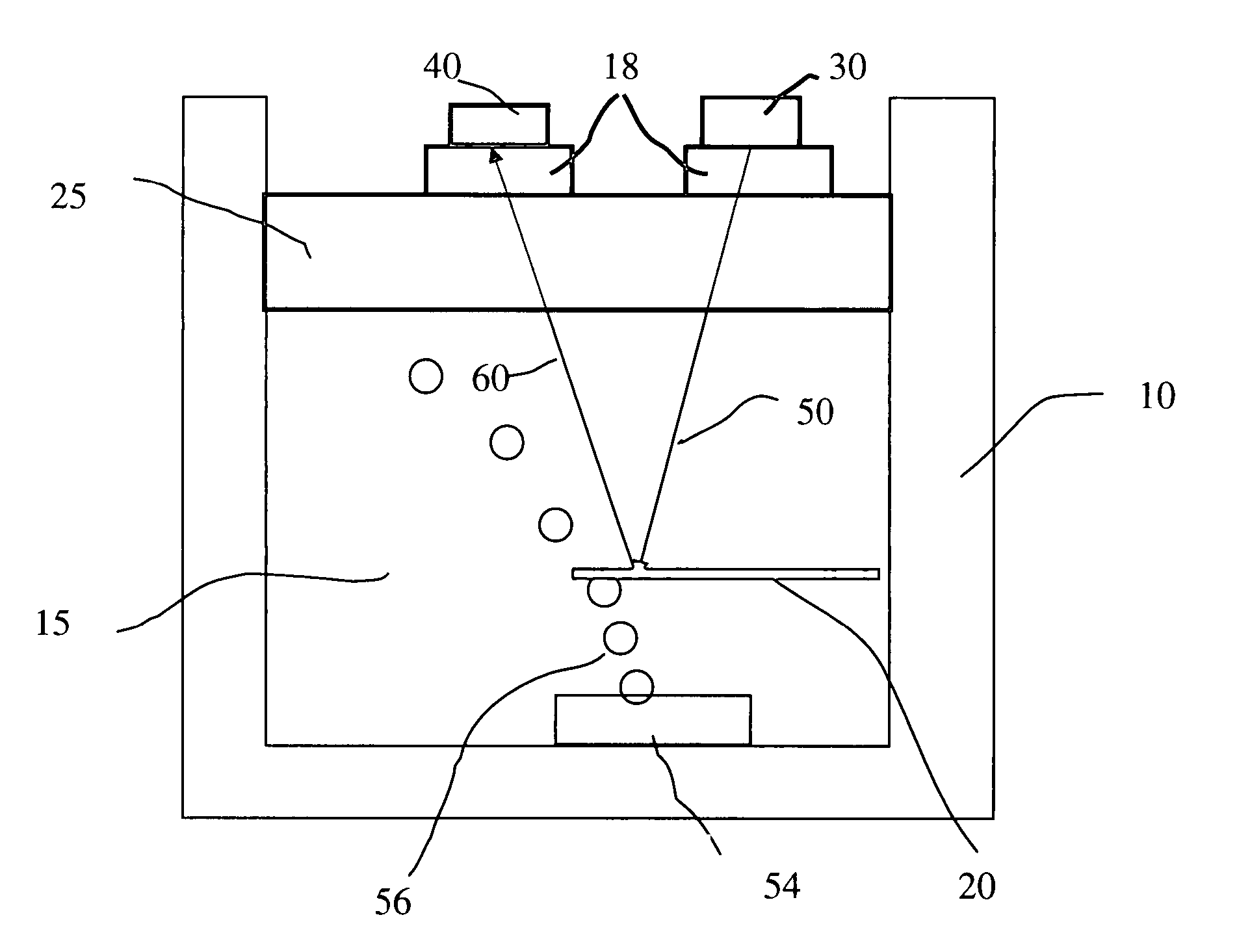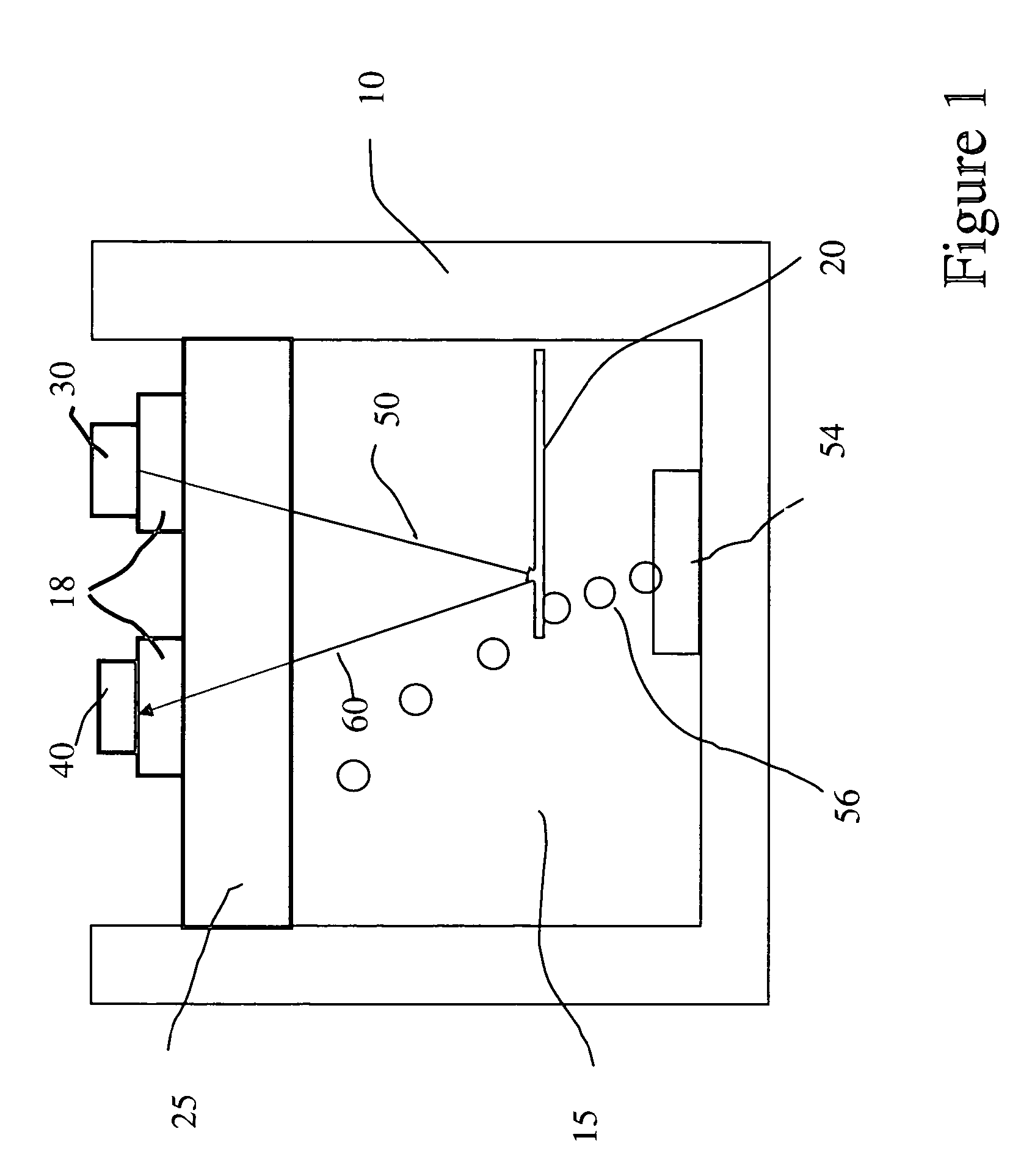Nanomotion sensing system and method
a technology of motion sensing and nano-sensors, applied in the field of force-transducing sensors, can solve the problems of increasing the complexity of the system operation, increasing the cost of requiring trained technicians to operate the system, and requiring cumbersome manipulation of the prior art cantilever deflection sensor, so as to reduce the cost of system operation, reduce the cost of maintenance, and reduce the size of the system
- Summary
- Abstract
- Description
- Claims
- Application Information
AI Technical Summary
Benefits of technology
Problems solved by technology
Method used
Image
Examples
Embodiment Construction
[0033]According to the present invention, a change in cantilever position or vibration is measured in order to detect and characterize the motion of biological cells (bacteria, sperm), biological systems including motor proteins, or cilia (of the hearing organ, of the lining of the airways in asthmatics).
[0034]Typically, a cantilever, which is but one form of a NMS sensor, as used with the method of the present invention When a specimen interaction occurs with the cantilever, a change occurs causing the cantilever to be deflected, e.g., moved up or down at its free end. Such deflection motion can be detected to a very fine degree, for example, down to a fraction of a diameter of an atom. A specimen interaction with the cantilever can also be detected by monitoring any change in the vibrational characteristics of a cantilever that is being excited in any manner that makes it oscillate.
[0035]As shown in FIG. 1, a cantilever 20 is provided which is on the order of a length in the range...
PUM
 Login to View More
Login to View More Abstract
Description
Claims
Application Information
 Login to View More
Login to View More - R&D
- Intellectual Property
- Life Sciences
- Materials
- Tech Scout
- Unparalleled Data Quality
- Higher Quality Content
- 60% Fewer Hallucinations
Browse by: Latest US Patents, China's latest patents, Technical Efficacy Thesaurus, Application Domain, Technology Topic, Popular Technical Reports.
© 2025 PatSnap. All rights reserved.Legal|Privacy policy|Modern Slavery Act Transparency Statement|Sitemap|About US| Contact US: help@patsnap.com



